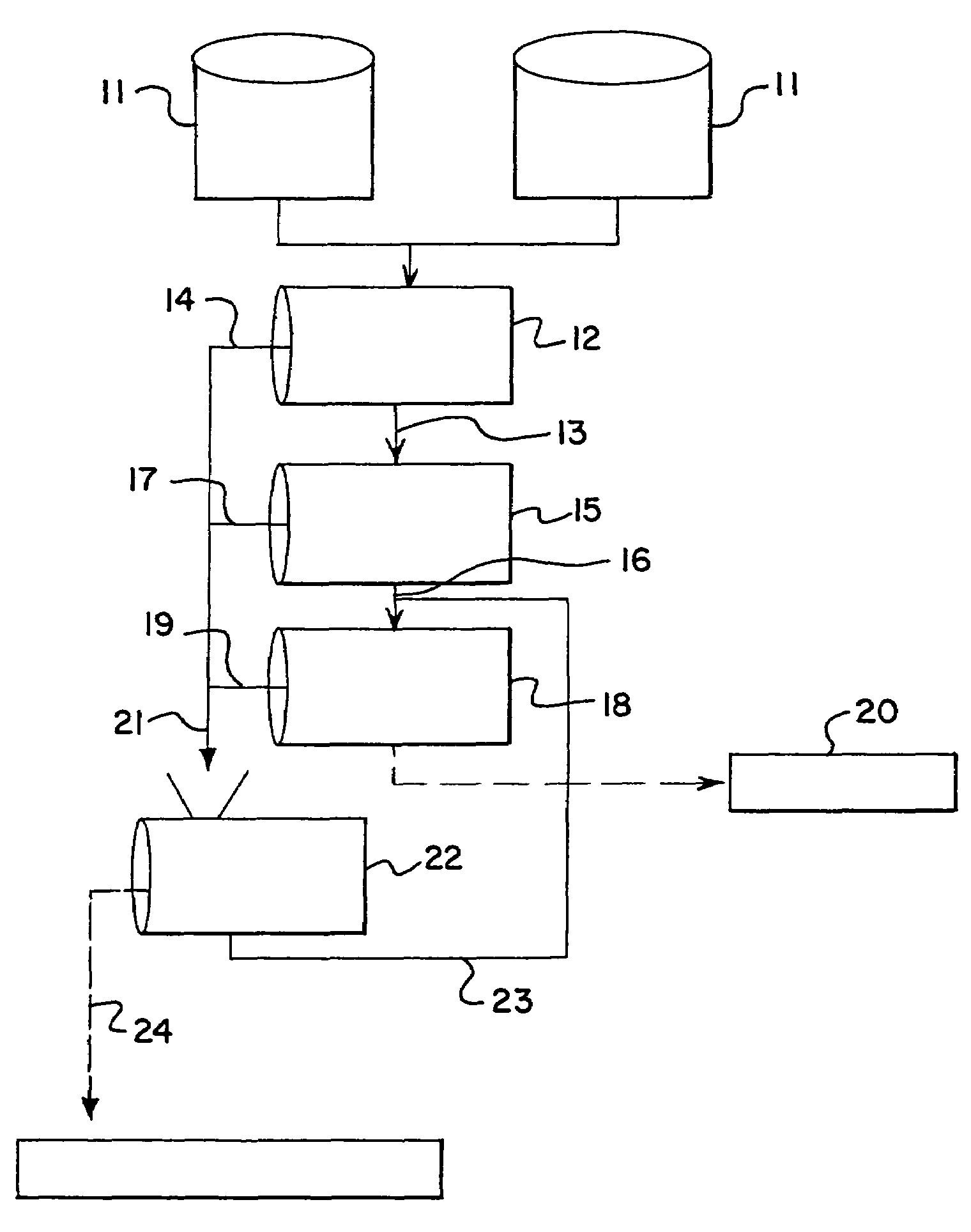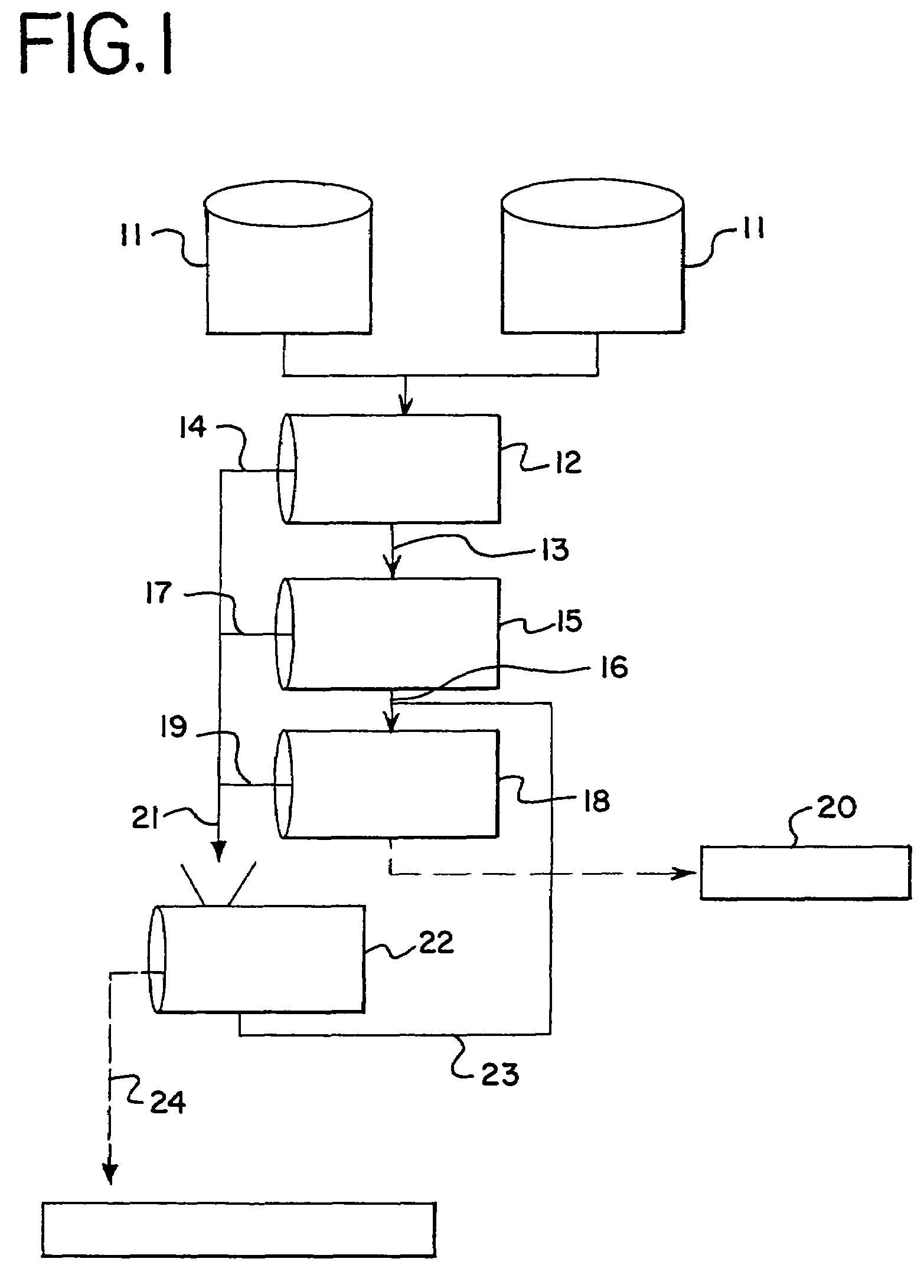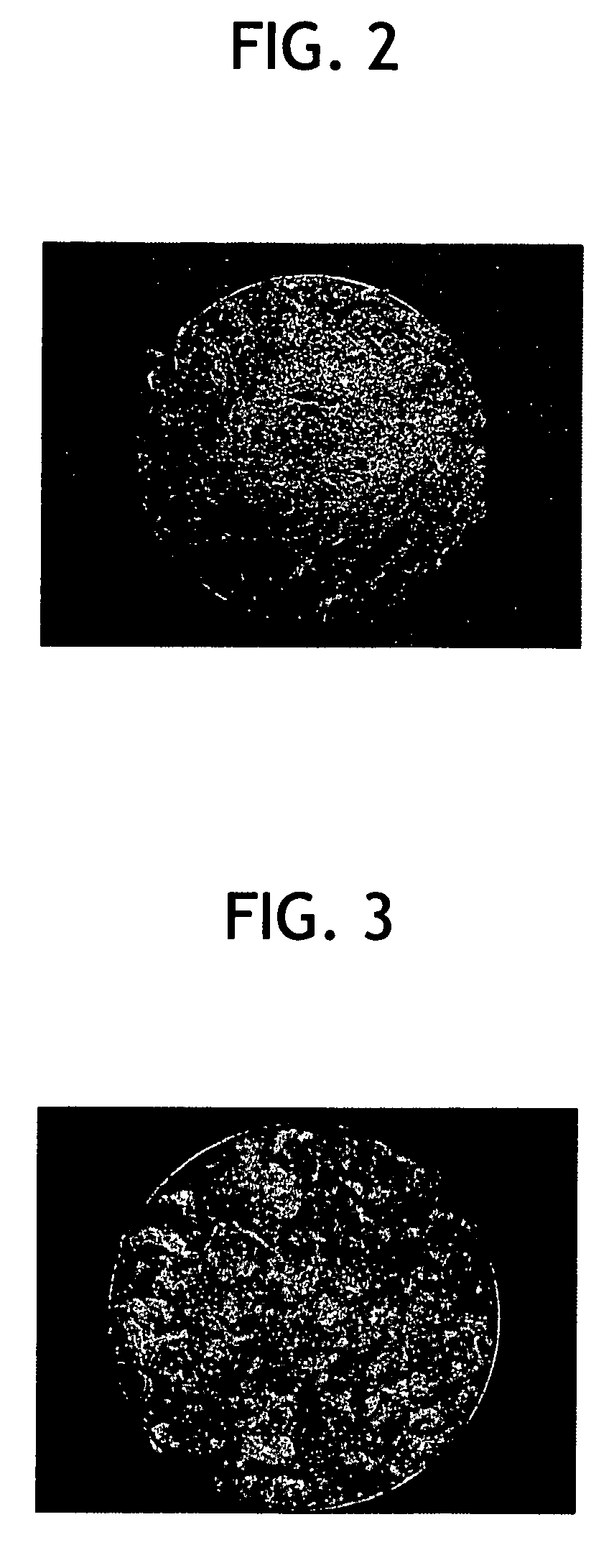Washed deboned meat having high protein recovery
a high-protein recovery, deboned meat technology, applied in the direction of filtration separation, grain treatment, separation process, etc., can solve the problems of reducing so as to improve the yield of protein, reduce the fat content, and the color of the color
- Summary
- Abstract
- Description
- Claims
- Application Information
AI Technical Summary
Benefits of technology
Problems solved by technology
Method used
Image
Examples
example 1
[0059]Deboned turkey drumstick meat from a Beehive deboner was subjected to multi-stage washing. 100 pounds of the deboned meat was mixed with 600 pounds of a 0.5% sodium chloride solution. Mixing proceeded for 15 minutes in a propeller type mixer. This was analyzed to have 17.5% protein, 13.3% fat and 68.6% moisture. The resulting slurry was subjected to multiple-stage liquid-solid separation using a Double Drum separator of Lyco Manufacturing, Inc. The inner screen of the separator had a porosity of 1400 microns, an outer screen had a porosity of 250 microns, and a third, residual separator screen had a porosity of 150 microns.
[0060]After passage through the 3-stage liquid-solid separator, the washed deboned meat was analyzed to have 7.6% protein, 6.9% fat and 85.4% moisture. This represented a percentage of total protein present in the processed meat of 72%, namely 12.6 pounds of protein when compared with 17.5 pounds of protein in the 100 pounds of meat prior to processing.
example 2
[0061]A triple-screen Rotostrainer liquid-solid separator was used to separate a slurry of 100 pounds of deboned turkey drumstick meat with 600 pounds of a 0.5 weight percent sodium chloride solution. The meat, prior to slurry formation, had 17.3% protein, 12.45% fat and 69.3% moisture. After processing through the liquid-solid separator, the resulting washed deboned meat was analyzed to have a protein content of 8.6%, a fat content of 1.92%, and a moisture content of 89%.
[0062]The amount of protein in the original 100 pounds of meat was 17.24 pounds, while after washing, the amount was 10.787 pounds. This amounted to a percentage of total protein yield of 63 weight percent. This liquid-solid separator had an initial screen with a porosity of 1,000 microns, an intermediate, downstream screen having a porosity of 250 microns, and a downstream, finishing screen having a porosity of 150 microns.
example 3
[0063]The liquid-solid separator of Example 2 was used to separate a slurry of 250 pounds of deboned turkey meat containing heme and bone marrow components picked up during the deboning processing. A slurry was formed with 1,250 pounds of 0.5% sodium chloride solution. Mixing proceeded for 25 minutes in a propeller type mixer.
[0064]The deboned meat was analyzed to have a protein content of 17.2%, a fat content of 12.7%, and a moisture content of 69.4%. After the 3-stage liquid solid separation, the resulting washed meat product had a protein content of 7.3%, a fat content of 1.47%, and a moisture level of 90%. The percentage of total protein yield was calculated at 67%, with 28.21 pounds of protein in the washed product compared with 43 pounds of protein in the deboned meat.
PUM
| Property | Measurement | Unit |
|---|---|---|
| weight percent | aaaaa | aaaaa |
| temperature | aaaaa | aaaaa |
| temperature | aaaaa | aaaaa |
Abstract
Description
Claims
Application Information
 Login to View More
Login to View More - R&D
- Intellectual Property
- Life Sciences
- Materials
- Tech Scout
- Unparalleled Data Quality
- Higher Quality Content
- 60% Fewer Hallucinations
Browse by: Latest US Patents, China's latest patents, Technical Efficacy Thesaurus, Application Domain, Technology Topic, Popular Technical Reports.
© 2025 PatSnap. All rights reserved.Legal|Privacy policy|Modern Slavery Act Transparency Statement|Sitemap|About US| Contact US: help@patsnap.com



